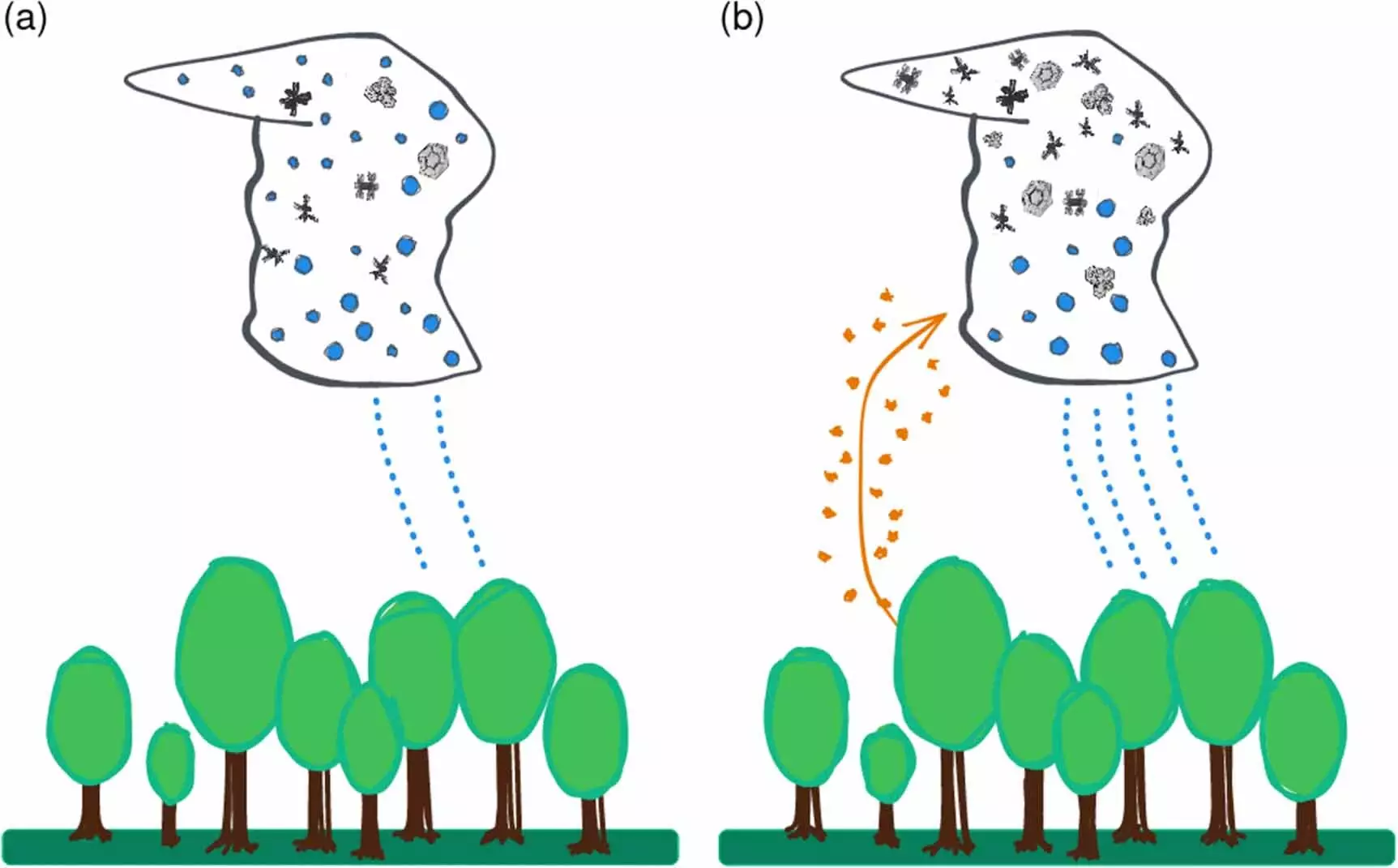Recent studies have unearthed the surprising role of pollen as a significant player in climate dynamics, particularly in relation to cloud formation and precipitation. Traditionally viewed as mere allergens or nuisances for individuals suffering from hay fever, pollen particles have been shown to partake in complex atmospheric processes, affecting rainfall patterns even in sub-zero temperatures. This shift in understanding not only deepens our knowledge of climate interactions but also underlines the intricate link between biodiversity and weather systems.
Research conducted by Dr. Jan Kretzschmar and his team reveals that pollen can serve as ice nuclei, which are essential in initiating the freezing of water droplets within clouds. Laboratory findings indicate that while pure water droplets typically require temperatures dropping below minus 38 degrees Celsius to freeze, the introduction of pollen alters this threshold, allowing ice formation to occur at more moderate temperatures, specifically between minus 15 and minus 25 degrees Celsius. This phenomenon is particularly remarkable, considering the implications it holds for understanding precipitation patterns, especially during spring when pollen levels peak.
The significance of smaller pollen fragments is particularly noteworthy. These particles arise when larger pollen grains break apart under humid conditions, leading to a greater presence of ice-nucleating particles in the atmosphere. Such smaller fragments can remain airborne longer, accessing colder atmospheric layers where they can facilitate ice and ultimately precipitation. This nuanced understanding of pollen’s lifecycle and behavior challenges the conventional view of larger particles dominating atmospheric interactions.
While the global impact of pollen as ice nuclei might appear minimal compared to other particles like dust, its regional effects cannot be dismissed, particularly during the spring. During this season, vegetation releases copious amounts of pollen, filling the air with these ice-nucleating agents just as temperatures drop. This seasonal spike underscores a critical factor in localized weather events, suggesting a potential increase in spring rainfall as pollen concentrations rise.
Kretzschmar’s research indicates that the ongoing shifts in climate change are amplifying this phenomenon. Warmer temperatures are extending the pollen season and enhancing pollen production, a situation expected to exacerbate by the decade’s end. Consequentially, we may witness not only a shift in weather patterns but also more frequent bouts of localized rainfall, altering the ecological and hydrological frameworks of various regions.
A deeper examination into biodiversity reveals its profound influence on pollen dynamics and, consequently, on weather systems. Many species bloom and release pollen simultaneously, leading to synchronized bursts of pollen affecting cloud and precipitation patterns. Understanding these interrelationships becomes vital in painting an accurate picture of climate behavior. The research highlights an essential link: as climate change threatens biodiversity, it may disrupt the natural pulses of pollen release that currently play a critical role in precipitation formation.
The effects of decreasing biodiversity—stemming from habitat loss and climate change—could therefore undermine our established weather patterns, prompting an urgent call for further investigation in this area. Policymakers and researchers must recognize these intricate dynamics while considering conservation efforts and their implications for climate resilience.
Incorporating the influence of pollen into climate models is paramount for refining predictions regarding weather patterns and precipitation events. By understanding how pollen interacts with climate variables, researchers can facilitate more precise forecasting. As Kretzschmar emphasizes, enhanced simulations that accurately encapsulate these complex relationships will shed light on potential future climate scenarios, ultimately aiding preparation for altered weather conditions.
The collaborative efforts of various institutes, including those in Leipzig and beyond, highlight a commitment to furthering this research and expanding our knowledge regarding the interplay between the biosphere and atmospheric processes. By unraveling pollen’s intricate role in cloud formation and precipitation, academia and climate science stand to grow their understanding of nature’s multifaceted feedback systems, ushering in more effective strategies to counteract the challenges posed by climate change.
While our perception of pollen has often been limited to its health impact, recent investigations reveal its significant role in shaping climate dynamics, emphasizing the need for further study and integration into climate models. By bridging the gap between meteorology and biodiversity, we can foster a deeper understanding of the environmental challenges ahead.

